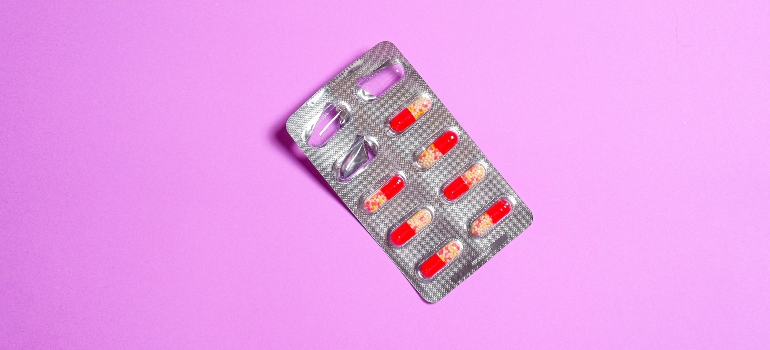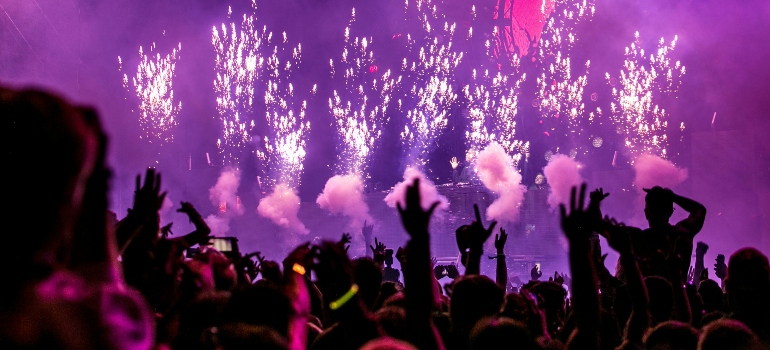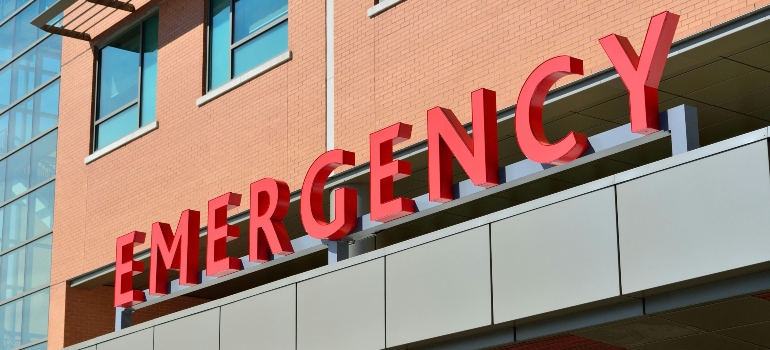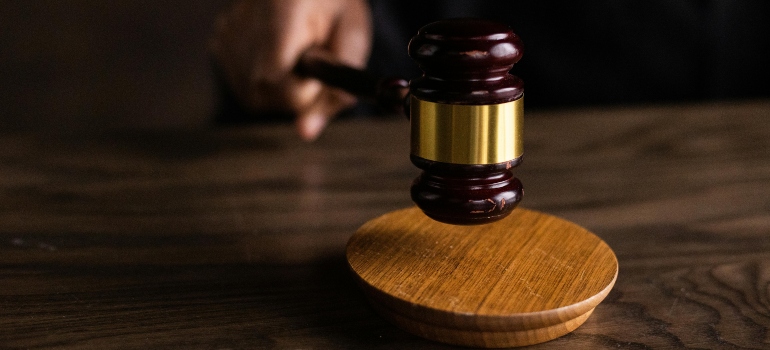Let’s talk about MDMA, a substance that has sparked endless conversations, debates, and research. Whether you’ve heard about it through the media, within academic circles, or at music festivals, MDMA stands as a topic enveloped in both intrigue and controversy. This post aims to shed light on what MDMA is, separating myths from facts and providing you with a clear, unbiased understanding of its effects, uses, and the discussions surrounding its legality and potential therapeutic benefits. So, let’s start this journey together and learn all about MDMA.
What Is MDMA?
MDMA stands for 3,4-methylenedioxymethamphetamine. That’s a big word, isn’t it? Think of it like a special key designed to fit into certain locks in the brain, affecting how we feel and see the world around us for a short time.

In simpler terms, MDMA is a type of drug that people take to feel really happy and energetic and to feel closer or more connected to people around them. It’s like it turns up the volume on the good vibes in a party or a gathering, making music sound better and lights look brighter.
You might have heard it called by other names like “Ecstasy” or “Molly.” Ecstasy usually refers to the pill form, which can have other stuff mixed in, while Molly is supposed to be the pure powder or crystal form of MDMA. But sometimes, what’s sold as Molly might not be pure, so it’s hard to be sure what you’re getting.
MDMA belongs to a group of drugs called “psychoactive substances,” which means it affects the mind. It’s also considered a stimulant drug, like coffee, because it can make you feel more awake and energized. At the same time, it’s a bit like hallucinogens, which are drugs that can change how you see or experience things because they can alter your senses and emotions.
How Is MDMA Used?
MDMA is used in different ways, depending on its form. When it’s in a pill (Ecstasy), people usually swallow it. If it’s a powder or crystal (Molly), they might swallow it too, wrapped in a piece of tissue paper (a method known as “bombing”), or they might snort it, mix it with liquid, and drink it, or less commonly, place it under their tongue or insert it into their rectum.
The typical dose varies but is often around 100 to 150 milligrams per session for an adult. It’s famously associated with dance parties, nightclubs, and music festivals, environments where its effects on empathy, energy, and pleasure are highly sought after. Users seek the heightened sensations of sound, sight, and touch that it provides, along with emotional openness, euphoria, and an increased willingness to communicate. However, people also use MDMA in quieter, more personal settings to deepen conversations, enhance personal connections, or explore psychological introspection.
What Effects Does MDMA Have?
MDMA, known for its potent effects on mood and perception, elicits a range of responses. The appeal of the drug largely comes from its capacity to produce several positive sensations, such as:
- Euphoria: A profound sense of well-being and happiness, often described as a rush of joy or bliss.
- Increased Energy: Users often feel a boost in energy levels, making them feel more lively and active.
- Enhanced Sensory Perception: Sounds, colors, and touch may seem more intense and enjoyable, enhancing experiences like listening to music or being in nature.
- Emotional Warmth and Empathy: MDMA can make users feel more emotionally open, connected, and empathetic towards others, promoting feelings of closeness and companionship.
- Lowered Inhibitions: It can reduce anxiety and fear, making social interactions easier and more enjoyable.

However, alongside its desired effects, MDMA can also lead to a range of adverse side effects. These can vary in intensity and duration. Common side effects include:
- Dehydration and Overheating: MDMA can significantly increase body temperature and lead to dehydration, particularly in hot environments or when dancing for extended periods.
- Nausea and Gastrointestinal Distress: Some users experience stomach discomfort, nausea, or vomiting after taking MDMA.
- Bruxism: Involuntary grinding or clenching of the teeth is common, which can lead to jaw pain and headaches.
- Insomnia and Restlessness: Despite feeling tired after the effects wear off, users may find it difficult to sleep or relax.
- Mood Swings and Depression: In the days following MDMA use, individuals may experience emotional lows, anxiety, or depression, often referred to as “Tuesday Blues” or “Comedown.”
- Cardiovascular Issues: Increased heart rate and blood pressure can pose risks, especially for those with underlying heart conditions.
How Does MDMA Work in the Brain?
MDMA changes how certain neurotransmitters behave. When someone takes MDMA, it causes a big release of three main neurotransmitters:
- serotonin
- dopamine
- norepinephrine
Serotonin is often called the “feel-good” chemical because it helps regulate mood and emotions. So, when there’s a lot of serotonin released, it can make people feel really happy and connected to others. Dopamine is involved in feelings of pleasure and reward, so the increase in dopamine from MDMA can make things like music and light seem even more enjoyable. Norepinephrine can cause alertness and energy, which explains why people feel more awake and full of energy after taking MDMA. All these chemical changes work together to create the overall effects of MDMA, making people feel happier, more connected, and full of energy.
What Are the Risks of Prolonged MDMA Use?
Using MDMA can pose various short-term and long-term health risks that individuals should be aware of. In the short term, the immediate effects of MDMA can be intense and sometimes dangerous. For instance, the drug can cause a rapid increase in body temperature, known as hyperthermia, which can lead to heatstroke, dehydration, and even organ failure in severe cases. Additionally, MDMA can induce nausea, vomiting, muscle cramping, and teeth clenching, which can contribute to discomfort and potential health complications during or after use. Moreover, MDMA can heighten anxiety and agitation, potentially triggering panic attacks or acute psychological distress.

Long-term MDMA use can also have detrimental effects on both physical and mental health. Chronic use can disrupt the brain’s natural production of serotonin, leading to mood disorders such as depression, anxiety, and emotional instability. Furthermore, prolonged MDMA use may impair memory and cognitive function, affecting learning ability and decision-making skills. There’s also evidence suggesting that frequent MDMA use can strain the cardiovascular system, increasing the risk of heart problems like arrhythmias, hypertension, and even heart attacks over time.
If you realize that you have graduated from occasional experimentation to regular use, you may need to go through addiction treatment, where trainer professionals will help you detox safely and deal with the issues that made you want to experiment with mind-altering substances in the first place.
Is MDMA Addictive?
There’s a risk that using MDMA can lead to dependence or addiction for some people. Dependence means that your body gets used to having the drug, and you might start to feel like you need it to feel normal or happy. Addiction is a disease that makes you feel like you can’t stop using the drug, even if it’s causing problems in your life. While MDMA isn’t as addictive as some other drugs like cocaine or heroin, it can still lead to psychological dependence, where you rely on it to cope with stress or have fun. Some people might find themselves wanting to use MDMA more and more often to chase the good feelings it gives, which can lead to risky behavior and health problems.
What Is the Legal Status of MDMA?
In the United States, the government labels MDMA as a Schedule I controlled substance under the Controlled Substances Act, which is the strictest category for controlled substances. This classification means that the drug has a high potential for abuse, has no recognized medical use, and is unsafe for use even under medical supervision. Essentially, it means that the U.S. government considers it to be one of the most dangerous and closely regulated substances. MDMA is in a group with drugs like heroin, LSD, and marijuana in this category. Being a Schedule I drug, it’s against the law to have, sell, or use MDMA in any form. If someone is caught with MDMA, they could face serious legal consequences, including hefty fines and long prison sentences. The severity of these penalties highlights how serious it is to possess MDMA according to U.S. law.
However, the Food and Drug Administration (FDA) has approved certain clinical trials exploring MDMA-assisted therapy for conditions like post-traumatic stress disorder (PTSD). These trials are tightly controlled and only conducted by licensed professionals in specific settings. While some people argue that MDMA could have medical benefits when used in controlled settings, others are concerned about the potential for abuse and long-term health risks associated with its recreational use. The debate around MDMA’s legal status revolves around balancing its perceived therapeutic potential with the risks of misuse and harm to individuals and society.

Harm Reduction Strategies for MDMA Users
While we want you to stay away from any substances and will happily help you deal with addiction, we also feel that we should help you stay safe if you decide to try MDMA. For those who choose to use MDMA, it’s important to prioritize safety and minimize potential harm. Here are some harm-reduction tips:
- Test Your MDMA: Use a drug testing kit to check for purity and avoid harmful additives or contaminants.
- Stay Hydrated: Drink water regularly, but avoid excessive water intake to prevent the risk of dehydration or water intoxication.
- Take Breaks: Pace yourself and take regular breaks from dancing or physical activity to prevent overheating and exhaustion.
- Stay Cool: Take breaks in cool, shaded areas to regulate body temperature and avoid heatstroke.
- Know Your Limits: Start with a small dose and wait to see how your body reacts before taking more.
- Avoid Mixing: Avoid mixing MDMA with other substances, especially alcohol or stimulants, as this can increase the risk of adverse effects and overdose.
- Look Out for Friends: Stay with friends or trusted individuals who can support each other and seek help if needed.
- Plan Your Recovery: Allow time for rest and recovery after MDMA use, and prioritize self-care activities such as eating nutritious foods and getting enough sleep.
How to Seek Help for MDMA Abuse
For individuals seeking help for MDMA misuse or addiction, there are resources and guidance to support their recovery journey. Rehab centers in West Virginia play a crucial role in providing comprehensive treatment and support. Some of the available programs they offer include:
- Inpatient Program: This program involves residing at the rehab center for a set period, typically ranging from a few weeks to several months. Inpatient programs offer intensive, round-the-clock care.
- Intensive Outpatient Program (IOP): IOPs provide a step-down level of care for individuals who do not require 24/7 supervision but still need structured treatment. These programs offer therapy sessions and support groups several times a week.
- Long Term Drug Rehab: Long-term drug rehab programs are great for for individuals with severe addiction or co-occurring mental health disorders. These programs offer extended treatment duration, often lasting six months to a year or more.
- Partial Hospitalization Program (PHP): PHPs offer structured treatment during the day, allowing individuals to return home or to a supportive living environment in the evenings.
- Medication Assisted Treatment (MAT): MAT involves the use of FDA-approved medications, combined with counseling and behavioral therapies, to treat substance use disorders effectively. This approach helps manage cravings, alleviate withdrawal symptoms, and support long-term recovery.

Substance Abuse Therapy
Therapy plays a crucial role in helping individuals overcome MDMA addiction. In addiction therapy, individuals can talk to trained professionals about their struggles with addiction and learn healthy ways to cope with cravings, manage emotions, and build a fulfilling life without drugs.
Therapists use various techniques to help individuals understand the root causes of their addiction and develop strategies to avoid relapse, such as:
- cognitive behavioral therapy
- dialectical behavioral therapy
- motivational interviewing for substance abuse
- rational emotive behavioral therapy
Through therapy, individuals can gain valuable insights, develop new skills, and find the support they need to overcome MDMA addiction and live a sober life.
Learn All About MDMA – Live Free from Substances
Exploring all about MDMA has shed light on both its allure and risks. While it offers moments of euphoria and connection, it also poses serious health hazards and legal consequences. It’s crucial to approach it with caution, understanding its effects and considering the potential consequences before use. If you feel like experimenting with this substance, you should prioritize safety, seek support, and make informed decisions. Recognize when it’s time to seek help and always prioritize your well-being.



